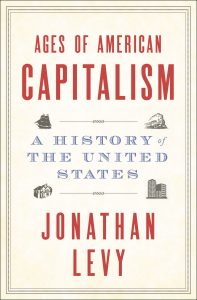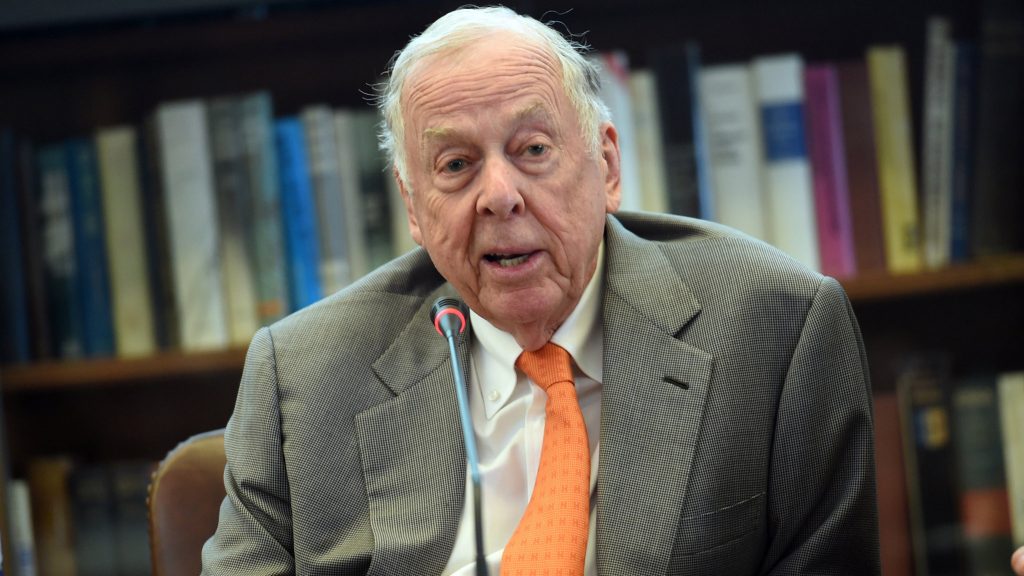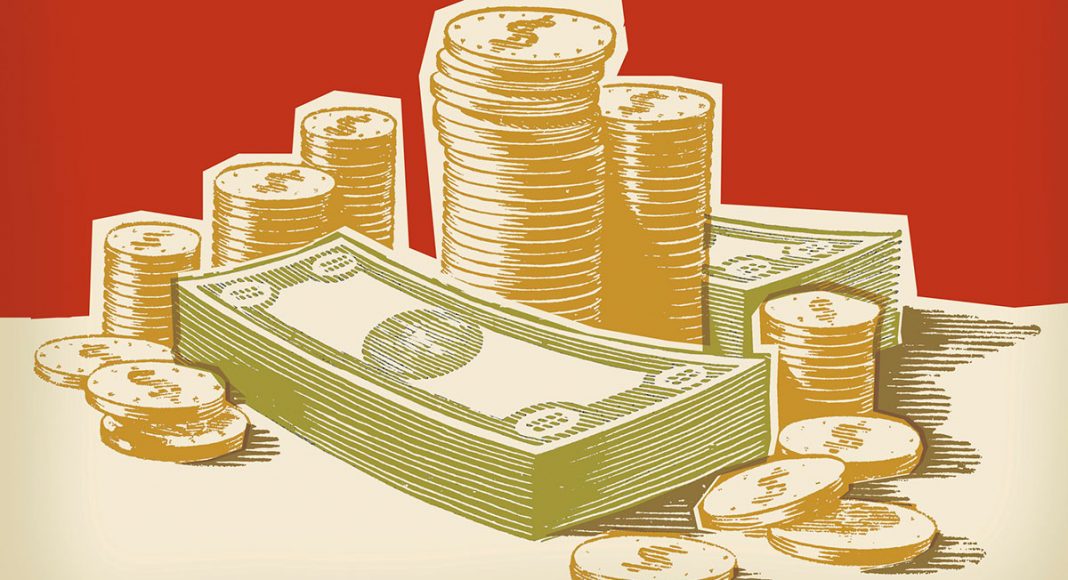In an excerpt from his new book, Ages of American Capitalism, economic historian Jonathan Levy explains how “financiers blew up the postwar industrial corporation and dethroned the postwar managerial class.”
Editor’s note: The current debate in economics seems to lack a historical perspective. To try to address this deficiency, we decided to launch a Sunday column on ProMarket focusing on the historical dimension of economic ideas. You can read all of the pieces in the series here.
The investment bank Drexel Burnham Lambert is a good place to begin to dig into the character of the post-1982 business expansion. In enterprise, the turn to leveraged asset appreciation required nothing short of a revolution in US corporate governance, in which financiers, including investment bankers, continued to wrest ever more power from an already-floundering managerial class.

The weapon was the new gospel of “shareholder value,” which demanded that managers act in the pecuniary interests of shareholders. That often meant slashing wages, foregoing long-term investments, or selling off assets, all in order to benefit the immediate bottom line. There was and is no hard law that says that US corporations must be motivated to maximize short-term profit. Most postwar industrial corporations, focused on long-term growth metrics and the maintenance of “organizational slack,” had not even tried. With the shareholder value revolution of the 1980s, the present stock market price of corporate shares newly became the metric of corporate success.
What enthroned shareholder value was a wave of sometimes hostile corporate takeovers. The movement began in the late 1970s, when oilmen flush with cash from the high prices of the oil shock came to believe that the stocks of large, diversified energy companies were trading below the value of their physical assets. During his 1983 bid to take over Gulf Oil, the Texas oilman T. Boone Pickens declared in The Wall Street Journal, “We are dedicated to the goal of enhancing shareholder value.” That was one of the earliest uses of the phrase. Pickens tried to convince the majority of Gulf Oil shareholders to convey the corporation into Pickens’s “royalty trust.” Then he would sell off assets unrelated to the oil business, returning cash to the owners. After that, he would offer the stripped-down oil company back to the public, hoping it would fetch a high value. Pickens never acquired majority control of Gulf Oil, but management paid him “greenmail.” That is, they bought back the shares that Pickens and his allies had accumulated at a price above the going market rate—far above what Pickens’s group had originally paid. Boone, Houston oilman Oscar Wyatt, Jr., and New Yorker Carl Icahn, among other corporate “raiders,” followed this strategy successfully. Icahn even “greenmailed” US Steel.

Corporate raiders could never have pulled off the shareholder revolution by themselves. They needed help in the capital markets. Joining corporate raiders were institutional investors, especially public and private pension funds. In other words, accumulations of capital that were the result of the postwar politics of pay funded changes in corporate governance that, ironically enough, undermined the politics of pay. The critical economic site shifted from income to property. If working people began to use debt to compensate for flagging pay and to sustain consumption, then leveraged buyouts demonstrated how property owners could use debt to leverage up their profits from their investments. In all, relative income growth shifted away from labor to capital.
During the 1970s, inflation had cut into pension funds’ investment returns, and new state and federal laws enabled them to seek riskier investments. In 1975 pension funds owned $113 million worth of stocks. In 1980 they owned $220 million. In 1985 they owned $440 million. This was a perfect example of how capital began to newly traverse asset classes in this period. The fund managers in charge of these investments believed they could hedge the risk of stock market investments through new financial products. For instance, pension funds bought “portfolio insurance,” in which computers automatically sold off stocks from their portfolios if stock prices declined. The academic theory behind portfolio insurance assumed transactional liquidity, “that continuous trading was possible”—that there would always be two sides for a trade, and not everybody would always be on the sell side. Furthermore, in 1982 the Chicago Mercantile Exchange began selling stock index futures contracts—essentially, an asset that tracked the price of the Standard & Poor 500 (called the “spooze”). Institutional investors, with regulators approving, bought them to hedge their stock market positions.
Hedges in hand, institutional investors followed the raiders. In 1984 Texaco paid $55 million in “greenmail” to the Texas Bass family, at $55 a share when the market price was $35. The trustees of the California Public Employees’ Retirement System (CalPERS), the largest US public pension fund and one of the largest shareholders of Texaco, wondered why CalPERS got nothing. CalPERS led the Council of Institutional Investors (1985) and joined the chorus demanding greater corporate focus on shareholder value. At all costs, the managers must focus on company stock price.
“There was and is no hard law that says that US corporations must be motivated to maximize short-term profit.”
“Shareholder value” was the rallying cry for a wave of leveraged corporate buyouts and associated mergers and acquisitions. In 1982, in the midst of a revolution in antitrust law, Reagan’s Justice Department changed its “merger guidelines.” No longer was the goal, as stated in 1968, to “preserve and promote market structures conducive to competition.” The new standard in assessing a merger was only whether its outcome would or would not “maintain prices above competitive levels.” This reflected the spreading influence of the Chicago Law and Economics movement, which argued that the only relevant standard for antitrust enforcement was “consumer welfare,” or lower prices—not market structure or barriers to entry. Judges stripped antitrust prescriptions against vertical and horizontal mergers out of the law. Between 1985 and 1989, there were thousands of leveraged buyouts, valued in excess of $250 billion.
Assuming that adequate greenmail was not paid, the art of the leveraged buyout was this. Raiders and also new “private equity firms”—the largest at the time was Kohlberg Kravis Roberts (KKR, founded in 1976)—bought a portion of the target company’s shares, usually between 5 and 10 percent. The game had begun. Other shareholders, especially the large institutional investors, had to be willing to sell out to the acquiring interest. Management could even choose to participate, and often business consultants encouraged them to do so. A company was far more likely to engage in a buyout transaction when executives from the finance rather than production or sales side of the corporation were in leadership. If managers resisted, the buyout would be “hostile.” To raise cash for the purchase of the shares, buyers secured credit lines from banks, or issued junk bonds—risky corporate bonds paying high yields. This was the final ingredient: the newly burgeoning debt market in junk bonds. They were what made the buyout leveraged. Investment bankers, above all Michael Milken of Drexel Burnham Lambert, made this market. Finally, after investor groups built up a large stock position, it offered corporate boards a bid—a named share price—to buy out the company and take possession and ownership of it.
Thus publicly traded companies became privately owned. But the company then had to raise cash to meet the debt payments. That normally meant selling physical assets, as well as cutting operating costs—including labor costs. Spectacularly, employee pension funds, to compensate for their employees’ flat compensation growth, sought yields by participating in leveraged buyouts, which then led newly indebted corporations to slash wages and eliminate jobs—so they could meet their debt obligations. Commonly, conglomerates were broken into parts, with many divisions sold off. It was a vertical and horizontal disintegration of the postwar multidivisional industrial corporation—more purging of fixed capital, more hemorrhaging of blue-collar jobs. After that, the corporation was sold back to public capital markets, hoping that the new share price had warranted the original purchase. If the stock prices kept going up, generally it had. Even if the stock price rose, did that necessarily mean that the underlying company was more valuable than it had been before the leveraged buyout? If the stock price rose, did it matter?
From the book Ages of American Capitalism: A History of the United States by Jonathan Levy. Copyright © 2021 by Jonathan Levy. Published by Random House, an imprint and division of Penguin Random House LLC. All rights reserved.






